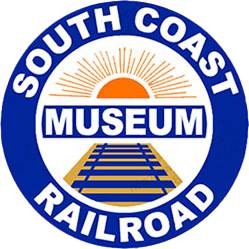Ellwood Station, a significant landmark in California’s railroad history, commemorates Ellwood Cooper, one of the state’s most notable pioneers in horticulture. Cooper played a crucial role in introducing the eucalyptus tree and advancing olive cultivation in Southern California. His influence extended far beyond agriculture, impacting both the landscape and the development of the Santa Barbara area, including the historic Ellwood Station.
The Legacy of Ellwood Cooper
Ellwood Cooper, widely recognized for his horticultural innovations, was instrumental in bringing eucalyptus trees to the Santa Barbara region. At his peak, Cooper cultivated as many as 150,000 trees across 24 species, and he became a prominent figure in promoting their utility through writing and lectures. His agricultural pursuits were diverse; he grew figs, citrus, walnuts, and olives, and operated the second-largest olive mill in the United States. Cooper’s olive oil won numerous accolades, and he became a pioneer in bio-control by importing ladybugs from China to manage scale insects in his walnut orchards. His wife, Sara Cooper, also contributed to their legacy by collecting plants, and their home garden became a must-see attraction for visitors.
The History of Ellwood Station
Southern Pacific originally spelled the station name as “Elwood” from its establishment in 1887 until around 1911, when it was officially corrected to “Ellwood” in Time Table No. 75 dated January 10, 1909. However, the change wasn’t reflected in Southern Pacific’s List of Officers, Agencies, and Stations until the first half of 1911.
Ellwood Depot was a 1-story frame building, measuring 20 feet by 67 feet, constructed to the Southern Pacific Standard No. 7 plans in Sacramento. The building was transported in pieces to the site and erected sometime after December 1887, when the railroad tracks reached Ellwood Cooper’s ranch. At that time, Ellwood Station marked the end of the line at milepost 543 on the Ventura Division. The milepost indicated the distance from Sacramento, with the tracks winding through Santa Paula to Saugus, over Tehachapi Pass to Bakersfield, and up the San Joaquin Valley to Oakland.
When the Coast Line was completed on December 31, 1900, through passenger service began in late March 1901. The tracks were realigned, and the depot was moved slightly to be adjacent to the new right of way. The milepost was subsequently changed to 358 on the Coast Division, reflecting the direct route to San Francisco through San Luis Obispo, Salinas, and San Jose.
For a brief period in 1908, Ellwood Station housed a telegraph and train-order office, though it never had an official agency. The station was removed from the Southern Pacific records on July 21, 1936, and the depot building was demolished sometime thereafter.
Today, the legacy of Ellwood Station lives on in Goleta, where Ellwood Station Road serves as a reminder of this historical site. The depot’s location was near where this road now crosses Highway 101.
Learn More About Ellwood Depot
For those interested in delving deeper into the history of Ellwood Depot and its significance in California’s railroad development, additional information can be found here.
Note: The terms “station” and “depot” are often used interchangeably. A station refers to a location on a railroad line mentioned in the timetable, which may or may not have any buildings. If there is a building used for passengers or freight, it is called a depot.

